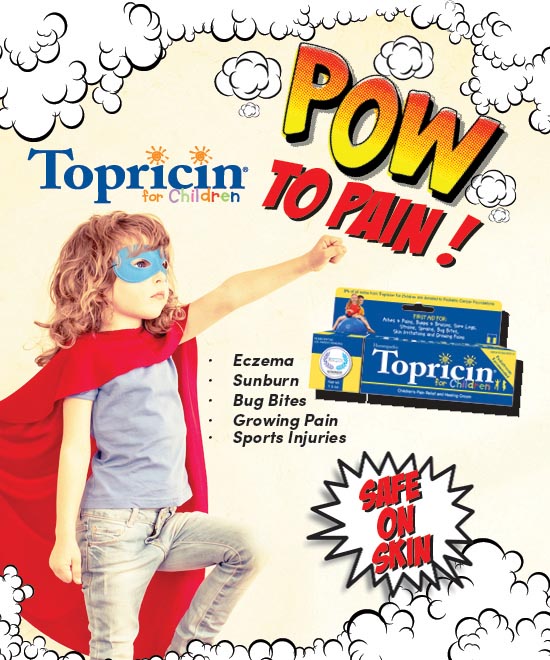Yesterday President Biden signed an appropriations bill that invests $1.9 Trillion into bringing relief to Americans affected by the Covid-19 pandemic. 1.9 Trillion sounds like an excessive amount of money to spend when our debt is $28 Trillion. Because of this, we have heard a lot of things from both sides of the aisle. It’s been called a packet of pork (a bunch of added amendments that have nothing to do with the bill’s intent). It’s been called Covid welfare. It’s been called the greatest relief bill in American history. A lot of political mumbo jumbo surrounds this bill, and I’m sure you are just wondering how it’s going to help you, your family, and your community. Well, here is my breakdown of the bill.
The Key Positives of the Bill
Another Round of Stimulus Checks
This bill will provide direct payments of $1,400 to individuals who earn under $75,000, Heads of Households who earn under $112,000, and married couples earning less than $150,000. Parents/Caregivers will receive $1,400 for each dependent up to $5,600. This, unfortunately, does narrow the eligibility of those receiving checks which was a compromise the Democrats made with the Republicans who were initially against another round of stimulus checks after the $600 Americans received in December.
Extension of Unemployment With A Federal Boost
Pandemic Unemployment Assistance will be extended to September 6, 2021. There will be an additional amount of $300 added to your unemployment benefits payment in addition to the extension. There is also a tax break coming along with that. Your first $10,200 benefits payment will be tax-free for 2020 if your income is less than $150,000. Who qualifies for the Pandemic Unemployment Assistance (PUA)? Those contract workers, gig workers, self employers, and freelancers can still find work or steady work during the massive shutdowns and travel restrictions.
Local, State & Business Aid
This has been a source of contention because of its large financial bill of $350 billion. This money will go to states, tribes, and local governments. States and the District of Columbia will receive $195.3 billion. Tribes will get $20 billion in relief. Territories will receive $4.5 billion, while counties and cities will split a $130 billion offer. The money has no restrictions or reservations. Some states have already announced their plans for the funds. Some will put into infrastructure, which will generate immediate jobs. Some will use it to address health and Covid-19 specific disparities. Some have stated they will use it to combat the housing crisis that increased due to the pandemic.
Small business owners will see another olive branch of help after a year of being essentially ignored by the federal government. There will be another loan distribution program that will provide long-term, low-interest loans to help small businesses stabilize. Businesses with 10 employees or less will be given priority. The PPP loans will begin again with an additional $7 billion with more allowance for non-profit organizations. A new program for promotion and outreach to highlight small businesses will be named Community Navigator Program and will receive $175 million.
Finally, some real relief for restaurants and bars. There will be a grant program created with a $25 billion endowment. Businesses may be eligible for a grant of up to $10 million which will be used for many unmet needs as we rebuild and reopen.
Nutrition Assistance
There will be a 15% increase in food stamp benefits through September 2021. There will also be $880 million for the WIC program that targets women and their children’s supplemental nutritional needs. It’s important to note that President Biden called for a $3 billion investment in the program to help reach his goals of pulling American children out of poverty and getting women back to work and school.
Housing
States and local governments will receive $20 billion to help low-income persons and families cover back rent, utility bills and provide rental assistance. There will also be $10 billion available for homeowners struggling with mortgages, property taxes, utilities, and more. There will be $5 billion allotted for building and providing adequate, socially distant housing, with another $5 billion for emergency vouchers for those experiencing homelessness. We have all seen homelessness go up in the metropolitan cities, and with the natural disasters we have experienced recently, those numbers have increased.
Tax Credits for Working Families and Low-Income Workers
The child tax credit is expanding. Caregivers now see up to $2,000 per child who is under 17 years old. Under this bill, caregivers will see a credit of up to $3,600 for each child under 6 years old. Then up to $3,000 for each child under 18. Instead of a lump sum, parents may see a monthly check until the amount is spent. In addition to that, there will be a tax credit for individuals working who do not have children. The minimum age will be 19 and not 25.
Paid Sick and Family Leave
Under a compromise between Republicans and Democrats, this bill does not reinstate the optional paid family and sick leave related to the pandemic. What did that entail? Two weeks paid sick leave for those who contracted Covid or those who chose to quarantine. It also allowed for 10 weeks of paid family leave for parents who needed to stay home with their children when schools were closed. This is a provision from our previous Covid relief package. However, those employers who choose to keep this protection for their employees will enjoy and tax credit.
Schools and Child Care
There will be $125 billion invested into the public K-12 system. This money will ensure that the schools will be able to open safely for all children in all areas. Ventilation systems will be updated, reduced class size, hiring of support staff, and PPE (Personal Protective Equipment) for teachers and staff. Private schools will relieve $2.75 billion to use for the same purposes. While 20% of the money will be forced to address the education gaps our students have faced due to distance learning.
$40 billion will go to higher education institutions. There will be grants going directly to students to support school programs that were lost because of lack of funding and enrollment.
Healthcare & Healthcare Coverage
This might be my favorite part about this bill, especially as we saw so much healthcare coverage failure during this pandemic period. This bill will expand the eligibility for the Affordable Care Act subsidies. What does that mean? It means that the tax credits for signing up for healthcare would help make it affordable to pay your healthcare premium. However, the margin of eligibility is low. It was a painful compromise President Obama made with the Republican leadership to pass the Affordable Care Act. But then, not one Republican voted for the ACA (Affordable Care Act) bill. This is a point of contention between the Republican Party and the Democratic Party. The Republicans felt this was a sneaky way of helping to fix the Affordable Care Act. Many Democrats argue that healthcare should be affordable during a pandemic. As a patient, caregiver, and health advocate, I would definitely have to agree with the Democrats. There is never a time when healthcare coverage and proper healthcare should be out of reach to anyone in the United States. But more so during a public health crisis. There is a side to this other than making sure people are healthy.
So, what will this bill actually provide for healthcare? It means that anyone who enrolls during this extended enrollment time will pay no more than 8.5% of their income toward their coverage. There will be an elimination of premiums for those who are receiving unemployment benefits in 2021 and lower-income individuals for two years. It also creates premium subsidies for unemployed individuals unable to continue to use their job-based coverage through COBRA. This will run from April through September. There will also be a 5% boost in federal aid for Medicaid expansion for those states who decide to expand Medicaid. There will also be an allocation of $8.5 billion to help hospitals in rural areas over run with Covid and chronically ill patients.
There are also a series of Block grants of $1.5 billion will be available for states to boost support for substance abuse recovery and mental health help through 2025. Mental health coverage will include support for mental health & suicide support for our youngest citizens. It will include training for healthcare providers & Law enforcement officers up to $80 million.
Covid Vaccines and Testing
This bill will continue the positive trajectory we are experiencing with fighting the Coronavirus. There will be $14 billion dedicated to Covid-19 vaccine research, development, equity, distribution, and outreach. There will be an additional $47.8 billion toward testing, contact tracing. As well as community testing sites, lab capacity, and underserved community outreach. There will be $7.7 billion to hire 100k public health workers to support our engaged and overworked healthcare providers. FEMA will receive $50 billion toward expanding vaccination efforts. While $20 billion will be invested into a national vaccination program.
Outside of these key points, there are so many humane elements of this bill such as Covid-19 related funeral assistance & reimbursements for those deaths from 2020-2021. Emergency assistance for those families in need of food, diapers and other infant needs. There will also be reimbursements for Food pantries and diaper banks.
The Drawbacks On This Bill
I am not an economist, so I usually defer to the Congressional Budget Office (CBO) and that analysis. So the fact of the matter is we will not see an instant major boost to unemployment. It will be gradual and won’t see a significant difference until 2024. We may not see pre-pandemic economic stability until 2025.
In a world where we have become used to instant gratification, that sounds really unfortunate. But take a moment to step back and think. Major relief now and a pathway to a better future. We were hit incredibly hard this past year on a global scale. It will take time to heal. It’s like beginning a new treatment. You get a little relief, but the mucosal healing will take a little bit of time. So, you have to be a bit patient, steadfast, and hopeful. Know that if we continue to mask, vaccinate and invest in one another, we will be okay. It’s also important to know that these are estimations. If we exceed those expectations, we may see a full recovery much sooner. Use this relief period to stabilize yourself, your health, businesses and move toward a better day.
5 Ways To Support The Relief Efforts
- Continue to Mask
- Continue to Test
- Get Vaccinated
- Shop Small
- Shop Local
I see this 1.9 trillion has a major investment in ourselves. Sometimes we have to spend a little to stabilize things. We always invest in repairs on our homes and cars to keep them safe and running. This is no different. Although the CBO predicts a full recovery in a few years, we can start to stimulate the economy with the relief we are receiving. Including getting affordable healthcare and keeping ourselves healthy during this pandemic.
I’m very hopeful that this bill will get us started on the right path toward healing together.



